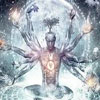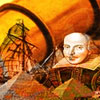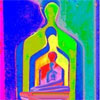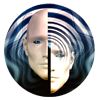Past Lives: Hereditary And Environmental Influences
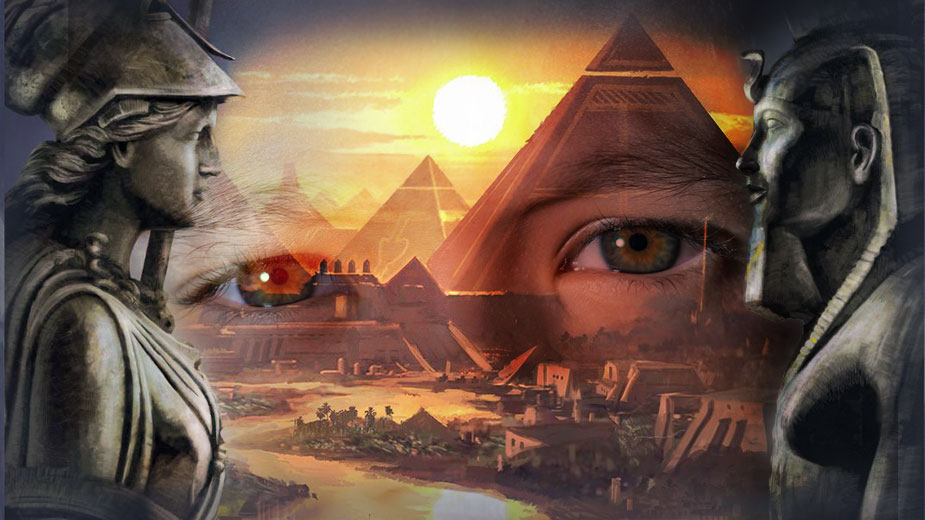 by Robert C. Smith
by Robert C. Smith
Let’s examine the role heredity and environment plays in our lives by looking at the relationship between these influences and the ones we bring with us from our previous incarnations. Thus far, our work has been based on the assumption that our interests and characteristics are strongly shaped by former lives. How, then, do we account for the effects of heredity and environment?
Modern genetics has shown pretty conclusively that we inherit through our genes not only our physical makeup, but many of our mental and psychological traits as well. If this is true, how can we say that past life influences, rather than simple genetics, have caused a person to be fat or thin, a mathematician rather than an artist, or whatever the case may be?
We have a similar puzzle with respect to environment. We know that our early childhood experiences, our family setting, and virtually everything going on in the world around us all have an influence on the way we think about and react to life’s events. How, then, can we attribute traits of temperament and personality to past life experiences? Are we denying the role of heredity and environment in making us who we are?
Probably the best answer is, yes and no. Yes, we are denying that heredity and environment are the absolute molding agents in our lives, forces which shape us without regard to our own choice. On the other hand, no—we are not denying that heredity and environment have a very real effect on our lives. But rather than seeing them as factors which determine who we are, perhaps we should view heredity and environment as conditions that we’re drawn to in order to meet the results of choices we’ve made in the past. In other words, heredity and environment interact with this thing we call karma in such a way that each life is a continuation of patterns, good and bad, that we’ve established in previous lives. Here’s how it might work.
First of all, it’s important to remember that in the reincarnation theory the essence of who we are is nonphysical. It’s the part of us that existed before we were born into the current flesh-body and the part of us that will live on after the body dies. If we imagine, for the sake of illustration, that our nonphysical essence is like a malleable substance—say, a piece of clay—we can begin to see how our choices shape our inner being. With each choice we make, that clay-like substance is shaped, forming a record of sorts. A talent developed here, a problem fed there, a happy experience, a painful one—they each leave their mark on our inner beings, shaping them into forms that become our individual identities. And when our nonphysical essence is drawn into physical form, it attracts to itself just the right heredity and environment to fit the inner identity. We might imagine our heredity and environment to be a glove, custom-made to fit the hand.
Or consider it this way: Suppose that clay-like essence we spoke of a moment ago is also magnetic. Just as our magnetic lump of clay would draw to itself iron filings that would encase it and give it a hard outer shell, our inner identity encases itself in physical and environmental circumstances.
It’s important to remember that patterns which have taken on concrete form in our physical or environmental circumstances usually can’t be changed instantaneously; the inner form must be changed before a new outer shell can be constructed to conform to it. For this reason body traits can be some of our most enduring records of past life experiences. The physical makeup we come in with is pretty much indicative of some patterns built in prior lives. Because of this, we can learn to read our body’s record of what we may have built or experienced in the past.
For example, consider the case of a man born with a partial paralysis of the right arm, making it impossible for him to open his hand completely. This could be part of a pattern built in a past life, one spent as a close fisted miser, unwilling to extend a helping hand to those around him. The man’s inability to extend his hand in the present is the logical consequence of the pattern he created. Thus his experience gives him the chance to learn how limiting his previous self-centered values can be.
Another person who received a reading from Edgar Cayce was told that his continual gastrointestinal problems are a direct result of an earlier life, when he had been a glutton.
Of course, not all body clues point to shortcomings or lessons we need to learn. Some are simply records of the past, like the skillful hands of a person who had been an accomplished artist, the sharp hearing of a former Indian, and the physical agility of someone with a previous incarnation as a great athlete. These clues become especially important when it seems that the person was just born with them, rather than having labored in this lifetime to develop such physical traits. One woman who came to Edgar Cayce for a reading made a living modeling her beautiful hands. Her reading told her that in a former lifetime she had used her hands to help others.
Our bodies can also store memories of past life traumas that we haven’t let go of yet. Birthmarks may be the carryovers—scars, if you will—of injuries incurred during former incarnations. One woman, for instance, carries a bright red birthmark on the back of her neck, and she has a continuing problem with psoriasis on the same spot. When she considers this condition and other clues she has pieced together, she theorizes a possible death by guillotine in the French Revolution.
Sometimes our body clues point to compensation for a past situation. Consider the case of one woman who now has a problem with obesity. This, along with some other past life clues, suggests to her that she might have struggled with poverty and starvation during a previous lifetime.
There are, as we have seen, many possible ways in which our bodies can reflect experiences from our past. Thus it is important to realize that a single body clue, all by itself, may not instantly suggest a past life theory. But it can be an important piece in the puzzle.
EXERCISE A
It’s time for you now to take an inventory of your own body clues. As you answer the questions below, some ideas about past lives may occur to you. Be sure to make note of these in response to question 18, which asks for any additional comments you may have regarding the exercise. But if you don’t get any hunches as you go along, that’s okay too. What’s important now is just that you think about and answer the questions. This will give you several useful clues as to your previous incarnations.
Section One: Physical Strengths
1) Consider your childhood as well as the present time. Did you, or do you, have any special body skills and characteristics that are physical strengths? Examples of this might be strong, broad hands that enable you to play the piano, or finger dexterity that allows you to do precision work, such as model building. List any such physical traits you possess; then indicate which of these you were apparently born with or developed naturally at an early age, as opposed to those you worked consciously to develop.
2) Again considering your childhood as well as the present, are any of your five senses particularly sharp? If so, state which of your senses is special in this way and describe the ways in which this acuteness is demonstrated.
3) Have you ever had any special athletic ability, either now or in the past? List your specific skills, as well as the body strengths necessary for these abilities. For example, you might list cross-country skiing, which would require great stamina and strong legs. Or maybe as a child you were the table-tennis champion of your block; this would show exceptional hand-eye coordination.
Section Two: Physical Weaknesses
4) List any trouble spots in your body where you frequently experience illness or discomfort. Include any chronic health problems (such as a bad back or recurrent sinusitis) as well as areas where illness tends to crop up repeatedly for you (for example, periodic trouble in the stomach or the respiratory system). Indicate any of these problems that you find especially bothersome to your mental outlook.
5) List any of your senses that are especially weak or are nonfunctional.
Section Three: Birthmarks And Features
6) List any birthmarks you may have and state where they’re located. If you have feelings about any of these marks, be sure to note them as well.
7) Do you have any specific features that others often notice or that you are particularly aware of? For example, maybe others frequently comment on your tiny feet. Or maybe you have always been very aware of having a long neck. Note any such features here, as well as whether you consider each one to be an asset or a problem.
Section Four: Your Behavior Regarding Your Body
8) List any habits you have involving the care and/or use of your body that are unlike those of most people you know.
9) List any body habits you make conscious effort to maintain.
10) Do you have any body habits about which others have complained? What are they?
Section Five: Your Attitudes Toward The Body
11) What physical ability do you wish for or have you striven to acquire?
12) Is there any particular physical injury or weakness you are afraid of having to face?
13) Are there any physical body types that you find generally attractive or repulsive? Explain.
14) What physical characteristics do you look for and admire in others?
15) Have you ever suddenly been attracted to a person? Describe what you consider to be that person’s most striking physical characteristics.
16) Have you ever had an unreasonable dislike for anyone? What physical traits of this person do you remember?
17) What physical weakness or handicap do you notice most readily in others? How do you feel about people who have this condition?
Section Six: General Comments
18) Are there any other insights that have occurred to you as a result of this exercise? Include, but don’t limit yourself to, any past life theories suggested to you by this inventory of your body and your feelings toward it.
Just as our physical heredity can reflect past life influences, the environmental forces that appear to shape our interests, abilities, and temperament can be seen as instruments bringing our soul patterns into action in this three-dimensional world. Our early interests, our fears and distastes, and even our talents and hobbies may on the surface be traced to people who inspired us, educational experiences that whetted an appetite or ability, early traumas that awakened a fear, and so on. But the deeper question remains: Did those environmental influences arise strictly by accident? Or did they come our way in order to awaken certain patterns the soul needed to experience? We are going to work under the hypothesis that there is indeed a reason behind the specific environmental circumstances into which each of us was born. Thus we can look to our interests, fears, and talents to discover clues to past experience.
Sometimes the things that we liked to do when we were children can tell us about our earliest inclinations. Many times these activities are forgotten by the time we’re adults. But we’re left to wonder: could those very early interests, talents and hobbies be clues to carryovers from our previous incarnations?
One person remembers that when she was a child she loved to design cities and the architecture in them. She’d use paper and cardboard to construct the fronts of stores and houses, and she’d plan the layout of streets. She also enjoyed designing articles of clothing for her dolls and cutting them out of paper. Was this child remembering a past skill in architecture or design? Her tendency actually to cut her creations out of paper, rather than just drawing them, may also tell her something. Possibly it would show a need to be concrete, or maybe a special talent for working with three-dimensional models.
One young man’s family informs him that as a toddler he was obsessed with drawing pictures of planes going down. They say that he repeatedly listened to the “1812 Overture” on the record player and that he would cry when the cannons went off. This man’s childhood drawings and fascination with the “1812 Overture” may come from a memory of an earlier incarnation in a military setting. Interestingly enough, he has no interest in things military now that he is an adult.
Another person tells of having been the only little girl on the block who played pirate. She had the whole outfit: black eye patch, sword, and T-shirt with broad horizontal stripes. The picnic table was her boat, which she could ride all day. And, of course, there had to be buried treasure; she’d bury something and make elaborate pirate maps, burning them around the edges to give them that charred-parchment look. Possible memories of seafaring adventures could have been influencing this child unconsciously. Or the game could have been the form her childish mind built around some deep-seated interests. In this case, the woman has had a lifelong interest in maps and a good sense of navigation. Although today she uses this interest and ability primarily to get around in an automobile, she may well keep her skill with maps and navigation in mind as one piece of her past life puzzle.
One woman recalls that she never played house—she played preacher. She’d line up all her dolls and preach to them for hours. Here is a case of a childhood interest that has clearly been carried through to adulthood. Today this woman is a gifted lecturer whose ability to speak on subjects like meditation, dreams, and the setting of spiritual ideals has had an impact on thousands on lives. Did she develop this talent all in the space of her current lifetime? Or does her childhood interest perhaps suggest a past life carryover?
EXERCISE B
Quite possibly, as you read these stories about other people’s childhood interests, memories from your own childhood began emerging. We’re about to take a few moments to allow you to think about those memories.
In this exercise we will be dealing with actual events, rather than fantasy. Therefore the experience you’ll be having here is not, strictly speaking, a reverie. Nevertheless, several of the techniques used in reverie may prove helpful here.
Relaxation of both body and mind is extremely important. Before beginning this mental trip back through the years, take some time to let yourself grow quiet. At the least, you should get into a physically comfortable position, close your eyes, take several slow, deep, natural breaths, and let any tensions slip away from you.
It might be helpful for you either to make a cassette tape of the material below to serve as your guide through this experience, or have a friend slowly read the material to you. Whatever method you choose, do not interrupt the flow of your memory in order to write your responses to the questions that appear in the text. These queries are intended merely to direct your attention to various details of your experience so that you will be able to recall them at the conclusion of the exercise. The questions will be repeated for you at that point.
And now it’s time for you to follow whatever relaxation technique you feel will be most effective, and then use your memory to revisit the areas of your childhood described below.
Let yourself be carried back to an early childhood experience. Visualize with your mind’s eye the event as it unfolds around you. As completely as you can, enter into this memory, becoming the child that you were when the incident first occurred.
In your chosen recollection, what are you doing? Whom are you with? How are you feeling? Stay with this memory for as long as you like, letting the experience proceed at its own pace toward its natural conclusion.
Now look back over your other childhood memories. What games do you remember enjoying? Were there any that you made up? What did you do on a rainy day in the summer? Were there special toys or belongings you particularly prized?
Did you like to draw? To color? Or to finger paint? If you did, what kinds of things did you draw?
How about favorite stories? Were there any you begged to hear again and again? Did you like to read stories and books on your own? What kind? Do any stand out in particular?
What about friends? Think about the friendships of your childhood. How were they different from one another? How were they alike? Were there particular activities you enjoyed doing with certain friends?
Continue thinking about your childhood for a few moments, as long as the memories last.
When your memories of early childhood have finished running their course, return to the present and answer these questions about them.
1) In the first childhood scene you revisited in this exercise, what were you doing? Whom were you with? Do you remember how you were feeling?
2) In your other recollections of early childhood, what games do you remember especially enjoying? Were any of them games that you yourself made up?
3) What types of things did you do on rainy days during the summer?
4) Did you have any special toys or belongings that you particularly valued?
5) Did you like to draw, color, or finger paint? If so, what kind of things did you draw the most?
6) Did you have any favorite stories? Were there any that you liked to hear over and over again? Did you enjoy reading books and stories on your own? What kind? List any that stand out in particular.
7) Think back to your closest childhood friends. In what ways were these friendships alike? How were they different from each other? Were there any specific activities you most enjoyed doing with certain friends?
8) List any circumstances in your early childhood that you consider especially fortunate.
9) Describe any circumstances from your early life that you feel were particularly unfortunate.
10) Did you have any childhood longings that were notably strong or persistent? What were they?
11) Briefly, how would you describe your childhood temperament and personality?
12) Note any additional memories you may have had or additional comments you would like to make.
Excerpt from You Can Remember Your Past Lives
Posted in Other Topics, Past Life Therapy, Reincarnationwith comments disabled.


